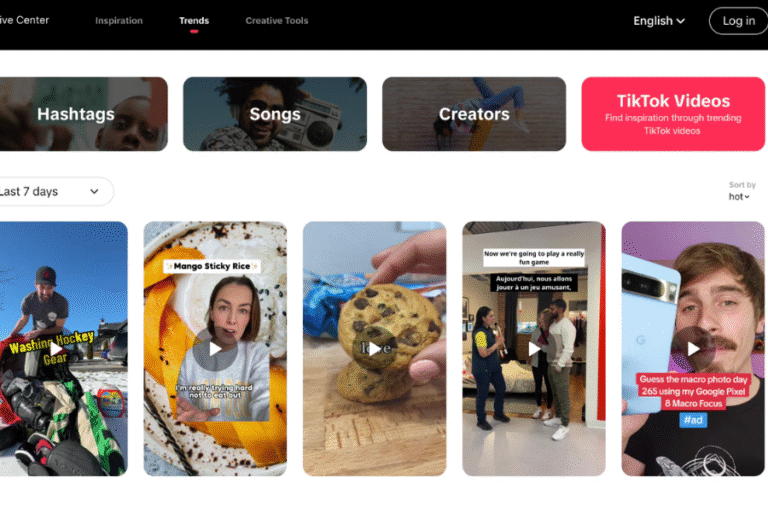InvestorWeeklyNews Tracks the Rise of AI Filters in Social Media Culture
In the evolving world of digital content, few phenomena have grown as rapidly — and as controversially — as the use of AI-powered filters. Once used primarily to smooth skin or add a subtle glow, filters have now become fully-fledged artificial intelligence systems capable of completely transforming faces, altering voices, simulating emotions, and even generating entirely fictional personas. Social media has shifted from a platform of documentation to one of digital augmentation.
At InvestorWeeklyNews, we’ve spent weeks analyzing this growing trend, tracking the rise of AI filters and what they reveal about modern digital culture. Are these tools empowering users with creativity and self-expression, or are they distorting reality and deepening identity confusion? This article takes a deep, balanced look at the rise of AI filters and their far-reaching implications.
From Simple Enhancements to Full-Face Reconstructions
Not long ago, filters were fairly basic. Snapchat added dog ears or flower crowns. Instagram allowed users to brighten their complexion or give photos a vintage feel. But the latest generation of filters is powered by advanced machine learning models capable of facial mapping, 3D modeling, and real-time emotion detection.
These new filters don’t just smooth out a pimple or add sparkle — they reconstruct the face. Jawlines are reshaped. Eye size is adjusted. Cheekbones are redefined. Skin color is altered to reflect different lighting environments, seasons, or beauty trends. What users see in their front-facing cameras is no longer themselves — it’s an optimized, AI-generated version of who they might want to be.
These tools are so seamless and realistic that many users, especially younger audiences, struggle to distinguish their real appearance from their filtered image.
The Psychology of Beauty and Digital Identity
One of the most talked-about concerns surrounding AI filters is how they influence self-image. Psychologists and mental health professionals are reporting rising cases of what’s been termed “Snapchat dysmorphia” — where individuals begin to feel uncomfortable or inadequate in their real-life appearance after prolonged exposure to their filtered face.
When a filter constantly shows you a slimmer nose, fuller lips, or flawless skin, the brain starts recalibrating its idea of beauty. Over time, this can erode self-esteem and create a disconnect between one’s physical and digital identities. People begin chasing unrealistic standards, often leading to cosmetic procedures, depression, or persistent anxiety about appearance.
Social media was once about sharing who you are. Today, it’s becoming more about sharing who you appear to be — as shaped by algorithmic ideals.
AI Filters as a Creative Medium
Despite their challenges, AI filters are not inherently harmful. For many creators and everyday users, they serve as tools of art, humor, storytelling, and self-exploration.
On TikTok, users transform into historical figures, animated characters, or gender-swapped versions of themselves. On Instagram, artists use AI filters to create surreal visual experiences, blending digital effects with real-life settings. The ability to shift looks instantly helps users explore identity, experiment with expression, and entertain audiences in compelling new ways.
Fashion influencers simulate entire wardrobes using digital wearables. Makeup artists test out new styles without lifting a brush. Brands run virtual try-ons that let users see how a lipstick or pair of sunglasses would look before buying. These use cases show that AI filters can also be practical, engaging, and empowering when used consciously.
Data, Privacy, and the AI Behind the Lens
What most users don’t see, however, is the data being collected behind the scenes. To function, AI filters must scan and map facial features with high precision. This means that every use of a filter involves storing facial data, behavioral patterns, and potentially even biometric identifiers.
This has raised alarm bells among digital privacy advocates. Who owns the facial data? How is it stored, and for how long? Could it be sold, misused, or accessed by third parties?
Major tech platforms have responded with privacy policies and data usage disclosures. However, the legal language is often vague, and most users agree to terms without reading them. The trade-off for convenience and fun is an often invisible compromise on personal privacy.
As AI grows more sophisticated, the question isn’t just what it can do, but what it should be allowed to do — and under what protections.
Cultural Impact and the Shaping of Beauty Norms
The global use of AI filters is also shifting cultural standards of beauty. A filter created in Silicon Valley or Seoul can end up influencing millions of users from entirely different regions and backgrounds. Often, these filters reflect narrow and homogenized ideas of attractiveness — lighter skin, sharper jawlines, larger eyes, smoother textures.
This has led to criticism that AI filters promote Eurocentric or East Asian beauty ideals while erasing diversity. As these filtered faces flood timelines and dominate explore pages, they begin to shape what’s seen as “normal,” even if that standard is far from the average real-life face.
Creators from underrepresented communities are pushing back, creating filters that celebrate natural features, traditional looks, and cultural symbols. This is an important counterbalance, but it also raises the question: should beauty be digitally defined at all?
The Rise of Deepfake Filters and Fake Identities
Perhaps the most alarming evolution of AI filters is their growing ability to create entirely fabricated identities. Known as deepfake filters, these tools can alter not just appearance, but voice, background, and even expressions in real time. What begins as fun can quickly become manipulative.
There have already been incidents of individuals using deepfake filters to impersonate celebrities, scam followers, or spread disinformation. In some cases, creators have built entire followings using fictional AI-generated personas without ever revealing their real identity.
While platforms like TikTok and Instagram have begun implementing detection systems and label requirements, the technology is evolving faster than the regulations. The line between performance and deception continues to blur.
Generational Shifts in Use and Perception
It’s worth noting that reactions to AI filters vary significantly across age groups. Gen Z and younger Millennials, who grew up with filters, often see them as normal or even expected. For older generations, the change feels more alien — a sign of technology interfering too much in everyday life.
This generational divide is also visible in how users interact with filters. Younger users may layer multiple filters, adjust facial features, and animate their expressions — seeing it as part of their online identity. Older users tend to stick to basic enhancements or avoid filters altogether.
Understanding these differences is key for brands, educators, and regulators looking to navigate the social media landscape.
Can AI Filters Be Used Responsibly?
The answer lies in intention and awareness. When users understand how filters work, what they do, and what data they collect, they’re better equipped to use them mindfully.
Platforms, in turn, need to do more than just offer tools. They must provide education, transparency, and ethical standards for how those tools are used. There should be visible warnings for extreme filters, better controls for facial data, and built-in features that highlight unfiltered content.
Responsible use doesn’t mean rejecting the technology altogether — it means understanding its impact and making conscious choices. AI filters are not going away, but our relationship with them can be shaped for the better.
Final Thoughts
AI filters are more than a passing trend. They represent a fundamental shift in how people see themselves, others, and the world around them. They can bring joy, spark creativity, and enable connection — but they also raise serious concerns about identity, privacy, and psychological well-being.
As social media culture continues to evolve, it’s vital for users, creators, and platforms alike to engage critically with the tools they use. What we present online has always been a reflection of who we are — but with AI filters in the mix, it also reflects who we are becoming.
At InvestorWeeklyNews, we will continue tracking this story as it unfolds. Because in a world of filtered faces and digital illusions, clarity and honesty matter more than ever.






